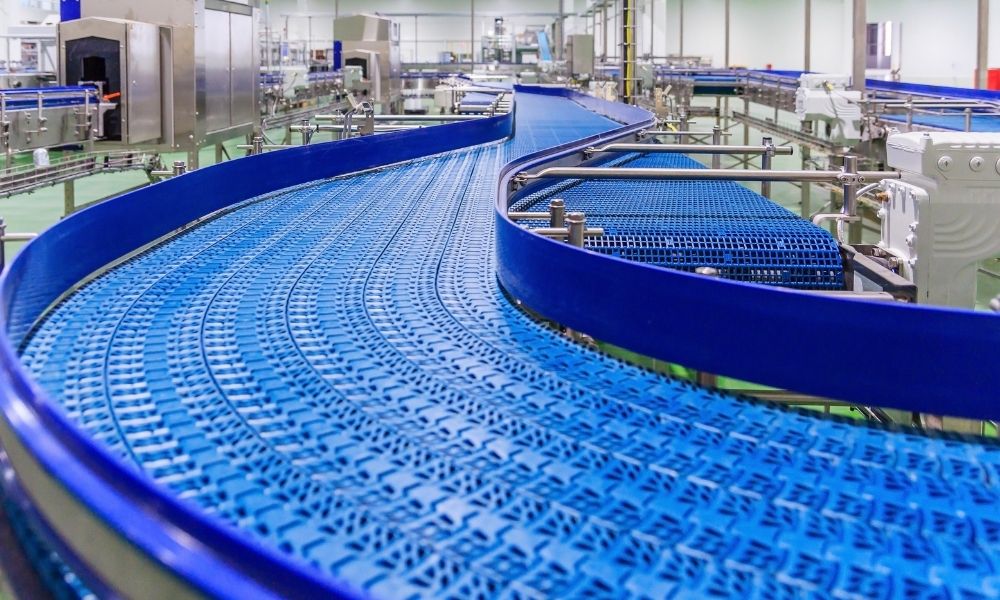
When weighing new conveyor system designs for your organization, there are lots of questions you need to find answers to, especially before setting up a pneumatic conveying system. After finding answers to those questions, you can tell what type of conveying is most appropriate for your production processes. Every conveyor comes with its own set of upsides and downsides that you must thoroughly evaluate before arriving at the final decision.
Below are the five types of industrial conveyor systems to consider and their functions.
Belt Conveyors
This is one of the most widely used types of conveyors due to its simplicity. The working of belt conveyors is straightforward as all you need is to place the materials or products into one end of the belt conveyor, and the conveyor will transport it to the other end. Although they are easy to operate, it’s worth noting that there are multiple subsections of belt conveyors.
Flat Belt Conveyors
There is an enormous similarity between belt conveyors and flat belt conveyors. However, one aspect that sets the two belt conveyors is versatility. Flat belt conveyors are more versatile than belt conveyors, making them more valuable and widely applied. This type of conveyor enhances friction to move objects regardless of their size, be it a heavy load or lightweight load. Nonetheless, not all flat belt conveyors can support heavy loads. Therefore, if that’s what you’re looking for, re-confirm to ensure you have found the appropriate flat belt.
Curved Belt Conveyors
This type of belt conveyor navigates curves in the track. It may appear like a straightforward task, but a significant number of conveyors can’t maneuver corners, so you must tailor them to do so. However, by using any of these belts, you won’t have to undergo the hassle of making such modifications provided it’s compatible with the rest of your needs.
Roller Conveyors
As the name states, this belt consists of rollers that transport materials along the track. They are ideal for handling products loaded on with the help of gravity rather than human contact. Using a separate device to load the materials on the roller conveyor as opposed to humans reduces the damage to the rollers.
Chain Conveyors
This type of conveyor can handle large, heavy materials. However, chain conveyors will always operate at a reduced speed. Automobile plants or factories widely use these conveyors for shipping sizeable containers. Another advantage of chain conveyors is that they provide several contact points for moving materials. In addition, they provide numerous loading/offloading points for producers to use.
Conclusion
With numerous types of conveyors on the market, finding the appropriate one may seem daunting. As you can see, there are several types of industrial conveyor systems, each with distinct features. By keenly evaluating each of these options, you can easily find one that suits your specific applications. Therefore, don’t settle on the first conveyor system you come across; instead, take your time to review the five types of industrial conveyor systems to consider before making the final decision.
